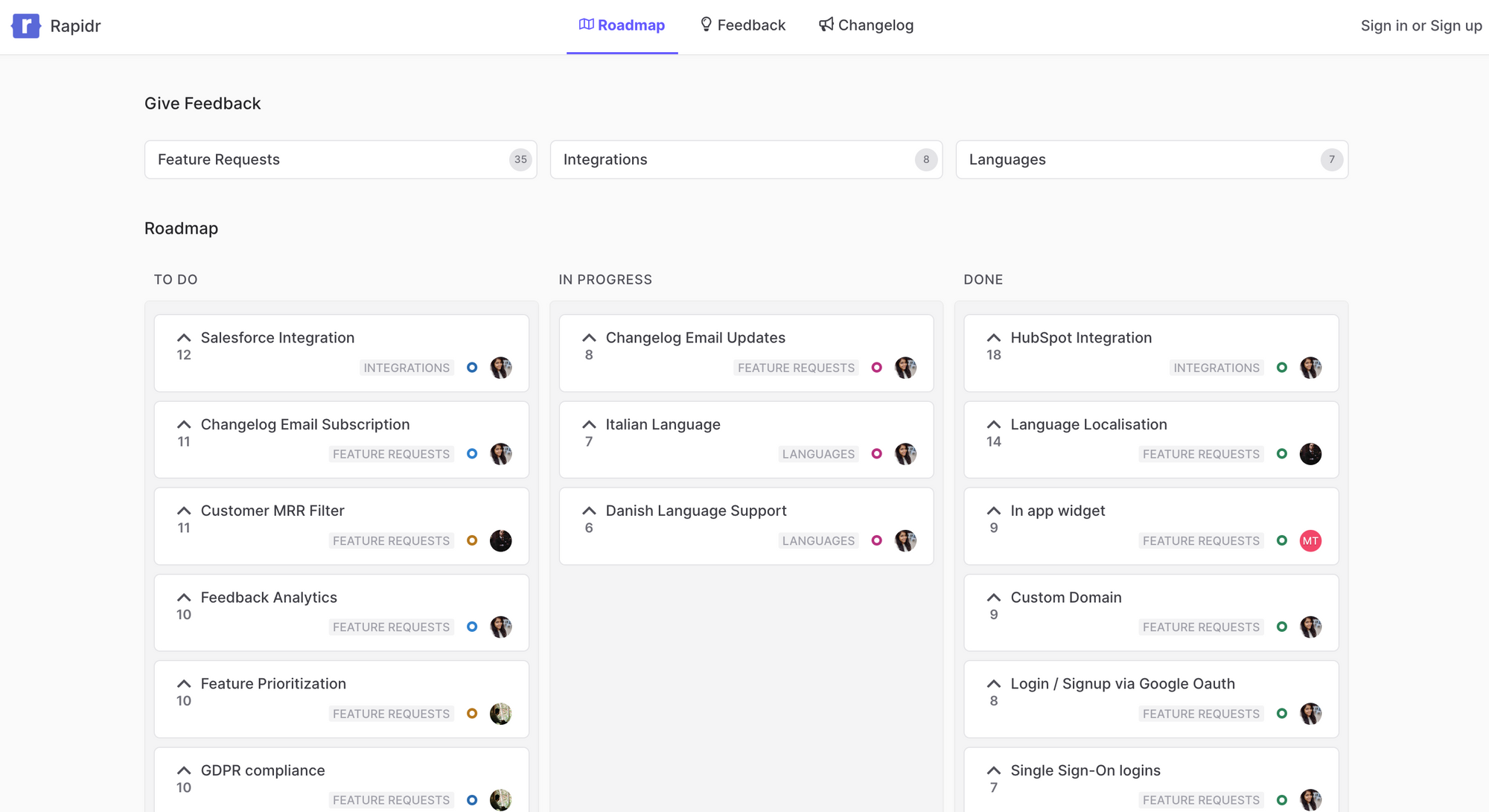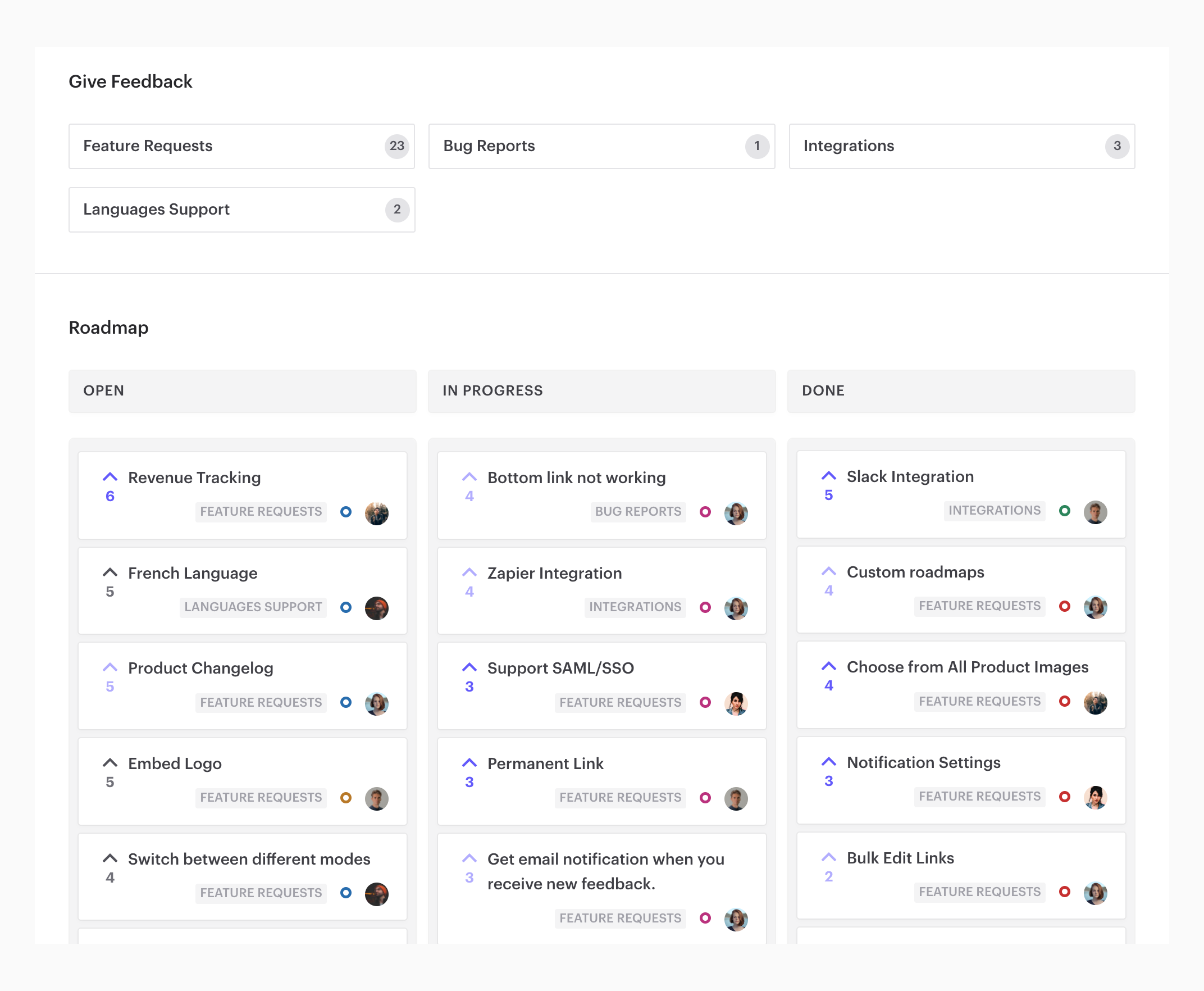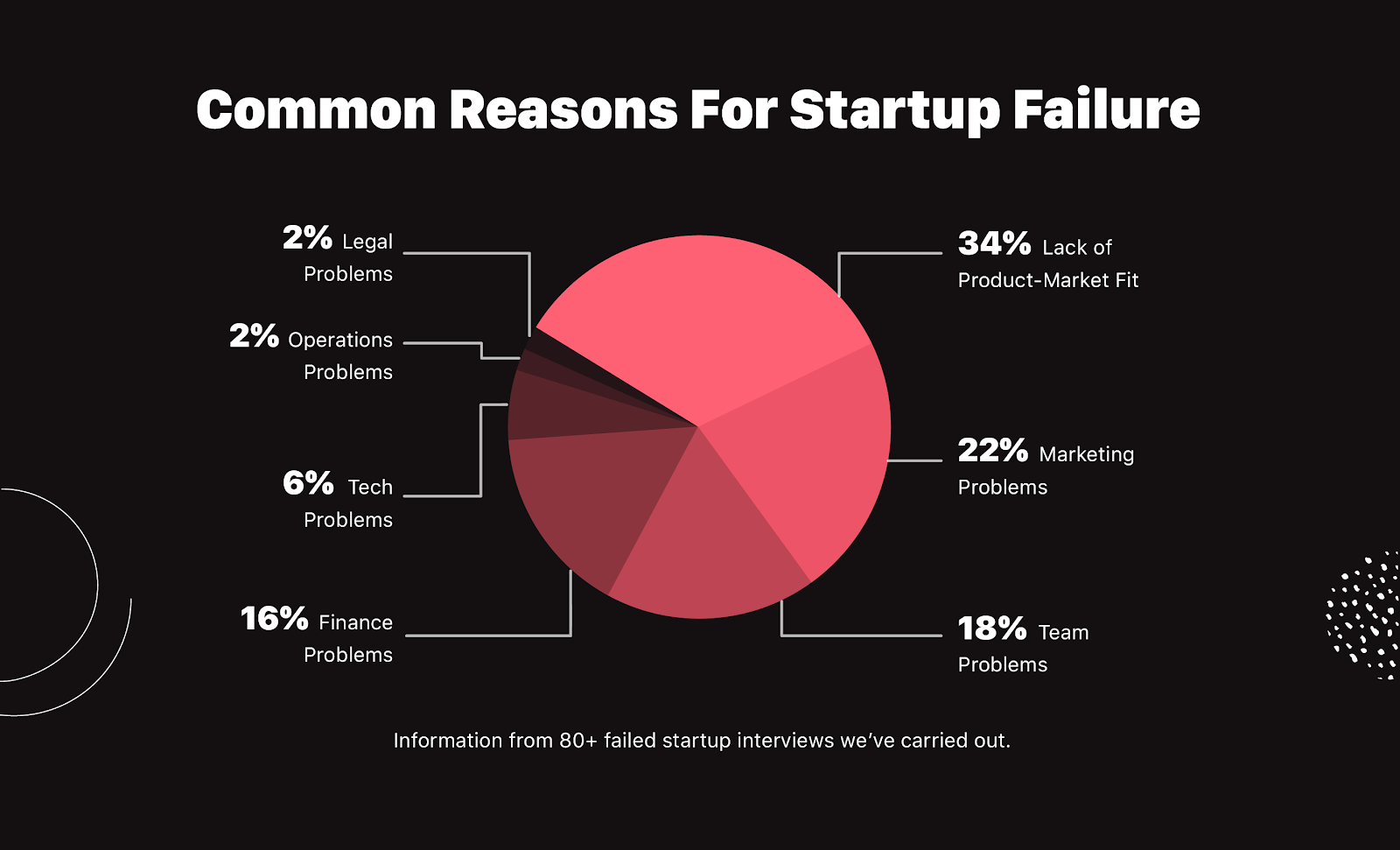
12 Reasons Why Products Fail (& Ways to Prevent it)
There are over 30,000 SaaS companies. Collectively, they have roughly 14 billion customers. Yet, some SaaS companies haven’t tapped into the wealth of knowledge they can get from their customer base.
With this in mind, it’s not surprising that nearly 30,000 products are introduced annually, and 95% of them fail. This article outlines 12 common reasons for product failure and tips and tricks to avoid product failure.
1. No product-market fit
Product-market fit occurs when a company has a wide customer base eager to buy and use the product and tell others about it. With no market demand being the second reason most startups fail, ensuring your company has product-market fit is important for its growth and sustainability.
Product-market fit, means being in a good market with a product that can satisfy that market. - Marc Andreessen
Product-market fit is achieved when your target market strongly demands your product or service. This means that you have identified a need in the market and created a solution that meets it. It also involves understanding customer needs, researching the market, and creating products that meet those needs.
Brisk was an online sales and marketing platform salespeople used to predict and analyze sales. Brisk closed its doors after four years mainly because of poor product-market fit. Brisk didn’t have many customers when the company began, which led to the team pivoting into offering customized solutions permitting many product cases.
Finding product-market fit is like peeling an onion. - Hampus Jakobsson
Flexibility to provide a solution to everyone influenced Brisk to be exceptionally unfocused. The problem they were solving and who they were solving it for, their ideal customer persona, wasn’t clear. This lack of focus, vision, and product-market fit ultimately resulted in product failure.
Tips For Finding Product-Market Fit
Customer feedback and product validation form the core of what needs to be done when searching for product-market fit. Often, founders think they have a great product-market fit when they don’t because they’re basing product development on what they believe should work instead of what customers want.
There are two ways to get customer feedback and product validation — tap into your existing customer base or speak with potential customers who fit your ideal customer profile. The best approach is to use both methods. Some tactics you can use to do your research include:
- Conducting voice-of-the-customer interviews
- Using feedback surveys
- Creating a customer feedback page to collect customer product feedback in a centralized place.
- Put together focus groups with people who fit your target audience.
Your research will help you create a minimum viable product (MVP) and do beta testing to experiment in the market. This testing phase lets you get a clearer picture of whether you’re truly filling a huge need.
2. Not solving the right problems
While all companies are geared towards problem-solving, not all address the right customer issues. Your product will appeal to the target audience if you focus on solving the right problems. Identifying and addressing the right problems at the right times ensures success and continued growth for a company.
In its heyday, Blockbuster was the place to get the latest movie releases outside of watching them at the movie theater. Blockbuster thrived in an era where the only way to watch movies was to buy a DVD or VHS.
Then came Netflix. Funny enough, Netflix founders offered to sell the company to Blockbuster for $50 million. Blockbuster turned them down. Eventually, Netflix triumphed over Blockbuster, popularized streaming, and forced the entertainment industry to adapt.
Netflix was an imminent threat because the team deeply knew the problems customers were facing and provided a solution that addressed all those concerns, ensuring a perfect product-market fit. Blockbuster was stuck in its ways of solving a problem that no longer existed (at least not in the same way as when Blockbuster began).
Tips For Consistently Solving The Right Problems
Talking to customers and validating product ideas with customers is the key to identifying whether your company is solving the right problems and crafting a well-defined problem statement.
To avoid product failure, product managers focus on solving the right problems with the following steps:
- Identify the problem by researching customer needs and pain points, analyzing market trends, and gathering stakeholder feedback.
- Prioritize the most critical problem that has the biggest impact on the customer or market.
- Research to understand the problem and its root causes better by analyzing data, conducting surveys, or conducting user interviews.
- Evaluate solutions against feasibility, cost, impact, and customer benefit to identify the most viable solution.
- Test and iterate: Test the solution with customers or stakeholders to gather feedback and iterate and refine the solution.

3. Neglecting customer feedback
You would have noticed a common theme in this article —customers are at the heart of product success. Their feedback is what will help your business thrive. Companies that fail to listen to their customers’ feedback risk losing out on potential sales and damaging their brand reputation.
Without considering customer feedback, be it positive or negative feedback, you risk creating a product that does not meet their expectations or solve their problems, leading to low sales and eventual failure.
Nokia was once a dominant player in the mobile phone industry, but it failed to keep up with changing customer preferences and market trends. Despite customer feedback about the need for touchscreen phones and app-based services, Nokia stuck to its traditional design and operating system. This resulted in the company losing its market share to competitors like Apple and Samsung.
Tips For Making Customer Feedback Easier To Discover
To avoid product failure, seeking out and listening to customer feedback actively is essential. This can involve conducting surveys, hosting focus groups, and engaging with customers on social media.
By incorporating customer feedback into your product development process, you can create a product that meets their needs and ultimately leads to success. See customer feedback examples of successful companies using feedback for their growth and advantage.
Observe product usage data. How your customers are (or aren’t) using your product gives you an idea of your product’s best features and glaring flaws. With a product roadmap, you can transform customer feedback into an actionable plan. and identify exactly what customers want from your product.

4. Poor product design
Great product design includes conceptualizing, creating, launching, and improving a product so that it solves your customers’ specific problems in a user-friendly way. But this means you have to deeply understand what your customer needs so that your products meet your customers’ expectations.
A product that is not intuitive, user-friendly, or reliable results in low engagement and high churn rates. Product failure results when companies don’t understand their customers deeply and continuously fail to improve their products.

Tips For Improving Product Design
Product design should be one of the first things you consider as part of your go-to-market strategy. The market segment you’re targeting, the product's functionality, product aesthetics, problems you’re solving, and sales and distribution strategy should be part of your product design process.
Central to this is knowing how to use customer feedback to your advantage. Customer feedback can come in many forms, such as product feedback and feature requests, in-app feedback, user feedback, user interviews and focus groups, and more. Use customer feedback to continuously fine-tune your product to provide customers with exactly what they need when they need it.

5. Inadequate market/industry research
Market research takes time. This reality is often one of the reasons companies go to market without proper research. Their products are created based on what they believe the consumer wants. A true recipe for product failure.
Kodak was once a dominant player in the photography industry but failed because it could not adapt to the changing landscape of the photography industry and declared itself bankrupt in 2012. Ignoring new technology and not adapting to the changing market dynamics initiated Kodak's downfall.
The company was slow to embrace digital photography, conduct market research and listen to the voice of the customer, so it failed to innovate and allowed competitors like Canon and Nikon to gain a foothold.
Tips For Effective Market Research
There are many ways to conduct market research. They all relate to speaking directly with your target audience, observing them, or learning more about your competitors.
If you’re using a product-led growth model, one of the ways you can learn more about your target market is to collect in-app product feedback. That way, the market can instantly tell you how they feel about your product. This information will help you pinpoint exactly what the market is looking for so you can adjust your product accordingly.
With Rapidr, you can capture in-app feedback by embedding a feedback board directly into your app. The more you collect and act on feedback, the more likely you’ll increase product adoption.

6. Incorrect pricing strategy
B2B SaaS pricing is complex. A Forrester study shows that 63% of B2B purchases involve more than four people, and B2B buyers often have more than 20 interactions with a brand before purchasing. These complexities make it even more important to get your pricing strategy right.
B2B buyers want value for their money, but this doesn’t mean you should lowball your prices. You want to find that sweet spot of value and profit generation that keeps your customers happy and helps your business grow. If the product is overpriced or underpriced, customers start looking elsewhere, leading to low adoption or revenue.
Transpose was originally a note-taking platform comparable to Evernote. The company closed in 2016 because the team couldn’t generate enough revenue at the $14.99 monthly price point. Transpose’s pricing strategy was built on one assumption — business customers would realize they could replace several information management platforms with one tool and eagerly pay for the service.
In reality, customers weren’t interested in paying for their service. This raises two questions:
- Was the price too high for the perceived value? Transpose was originally a note-taking platform comparable to Evernote. So, Transpose’s existing customer base would have been accustomed to prices comparable to Evernote’s price at the time (no more than $5.99 per month). Transpose’s business model changed, but customers’ perceptions of the brand didn’t.
- Did the team pivot without doing proper research? The harsh truth is that people didn’t want to pay for the service because they didn’t need it.
Tips For Selecting The Best Pricing Strategy
Start with your value proposition — the unique thing that makes your product valuable to your customers. Rapidr’s idea management software makes tracking ideas and feedback around pricing from your customers easy. You can use your product's ideas and usage data to determine what matters most to your customers and decide how to price it right.
It’s also important to note that B2B buyers don’t make decisions based purely on logic and product features. They make decisions based on emotions. Suppose you can demonstrate the value of your product in a way that taps into their emotions. In that case, you’re closer to identifying the outcomes they’re looking for and can then build a pricing strategy accordingly.
Yes, you should set competitive prices. But you should also price based on the value customers will get from your product — the desired outcomes you’ll help them achieve. Identify and communicate that value throughout your website and marketing efforts to price your product right.
7. Launching too late
Timing can mean the difference between successful go-to-market strategy implementation and product failure.
If you are not embarrassed by the first version of your product, you’ve launched too late. - Reid Hoffman
Launch too early, and you may miss key suppliers and opportunities. You also risk poor execution of your business idea. Launch too late, and you’ll be beaten by competitors ahead of the game and risk missing out on the opportunity to capitalize on customer demand.
See how Airbnb came along at the perfect time around the recession when millennials wanted to travel and find cheap and safer stays throughout their journey.
Tips For Choosing The Right Time To Launch Your Product
You don’t always have to be the first out of the gate. You can learn from the mistakes of your predecessors and fine-tune your product accordingly. What matters most is ensuring you have a great product ready to go and people want it.
Also, ensure your launch conditions are favorable. Will you be able to meet a spike in demand? Can customers easily make purchases without glitches? Are your suppliers able to deliver? Is your entire team ready to give customers the best possible experience?
8. Poor marketing and sales techniques
You can have a great product that hardly anyone buys because few people know about it. Without the right marketing and sales techniques, products may not reach the right audiences or may not be able to generate enough interest in potential customers. Microsoft Zune is an example of a great product that failed because of poor marketing.
Microsoft Zune, a digital media player, was launched in 2006 as a competitor to Apple's iPod. Despite its unique features, it failed to capture a significant market share and was eventually discontinued.
While Apple had been running iPod & iTunes commercials for years, Microsoft Zune was not committing to aggressive advertising to compete with Apple. Microsoft Zune never got more than single-digit market penetration. The Zune team spent vast sums of money on poor marketing and sales techniques and a lot of time chasing after Apple’s iPod until 2015, when it gave up.
Tips For Marketing Your Product
If you hate marketing, hire a marketer and a salesperson to do the work for you. You need people with marketing and sales experience to get your product in front of people at the right time.
Use a mix of marketing channels to reach your target audiences, such as social media, email marketing, advertising, content, and influencer marketing. Promotions and incentives can encourage people to try your product and build brand loyalty.
Don't forget to track your marketing and sales efforts to measure success using metrics such as website traffic, social media engagement, and sales. Use this data and feedback from users to refine your marketing strategy and drive sales to improve results.
9. Unsatisfactory customer support
Customer service, price, and product quality impact purchase decisions. Poor customer service can lead to negative customer experience, loss of trust, and increased customer churn, a metric that leads to product failure if it’s too high. You want to keep more of your customers, not lose them.
Zendesk Report found that 75 percent of people are willing to spend more money on a brand that provides a stellar experience.
Tips For Improving Your Customer Service
Great customer service is a mixture of allowing customers to find the answers they need while providing access to a member of your team right at their fingertips.
A positive customer experience should begin during the customer onboarding process. Provide guided tutorials and on-demand demos that explain how your product can be used. Direct customers to your knowledge base, where they can find video tutorials and articles explaining how to use your product. Add chatbots that provide instant answers based on what’s available in your knowledge base.
Also, provide opportunities for customers to report any bugs or issues with your product instantly. Your team can deal with issues more quickly when they’re reported promptly. Rapidr provides a bug-tracking tool that allows you to capture, record, manage, and resolve bugs and issues from users in one central location.
10. Facing competition
Competition can impact businesses in one of three ways. Companies that underestimate their competition get caught off guard when their competitors surpass them. The other option is that competition motivates a company to innovate and stay ahead. Finally, the competitor may be a much larger company that quickly dominates the niche, making it virtually impossible for smaller businesses to survive.
Competition can cause product failure for various reasons, such as lack of innovation, inferior quality, higher prices, inadequate marketing strategies, etc. To ensure that their products remain competitive, companies must stay ahead of the curve and take proactive steps to counter potential threats from competitors. They must also adapt quickly to changes in customer preferences and industry trends.
ChaCha closed its doors in 2006 because of a lack of innovation. Until the release of Google’s Panda algorithm in 2011, ChaCha was positioned as the easier way to find people's desired results on Google.
Search engines were so complex back then that it would take hours of searching to find exactly what you needed. ChaCha allowed people to access a human guide who would do this complex search. Google’s Panda algorithm made Google far more user-friendly. Therefore, ChaCha became obsolete.
Tips For Staying Ahead Of The Game
Staying ahead of the game requires:
- Hiring the best people with up-to-date knowledge and skills
- Paying attention to what your competitors are doing
- Keeping up-to-date with changes in the market
- Getting customer feedback regularly so you can keep improving your product to meet their needs
- Capitalizing on opportunities
11. Technical issues or bugs
When a product is released, it must be tested thoroughly to ensure it works correctly and without any problems. If there are technical issues or bugs in the product, this can lead to customer dissatisfaction and, ultimately, product failure.
Issues and bugs can cause various problems, such as decreased performance, user experience issues, security vulnerabilities, and data loss. Therefore, companies must ensure that their products are thoroughly tested before release to avoid potential technical issues or bugs that could lead to failure.
You can capture, manage, and resolve customer bugs and issues in an agile development cycle using bug-tracking tools.

12. Failure to innovate or iterate fast enough
To remain successful, companies must continuously innovate and iterate their products or services to stay ahead of the competition. Companies must be agile and responsive to changing trends. Failure to do so can result in products failing to meet customer expectations, eventually leading to product failure.
Companies should continuously evaluate their products, identify areas of improvement, make changes, and close the feedback loop. This helps them keep up with the latest trends, technologies, and customer needs.
Nokia's Symbian operating system, Google Plus, and Sony's Betamax video recorder were once considered industry leaders. However, they eventually lost out to their competitors due to a lack of innovation and not iterating fast enough.
Use Customer Insights To Avoid Product Failure
Product failure is avoidable if you remember one thing — your customers should be at the heart of everything you do. You want your product lifecycle to be as long as possible. That’s why you should develop a culture of regularly getting customer feedback. The more you hear from them, the better your product will be.
While many customer feedback management tools help you capture, organize, and prioritize feedback, consider the one that enables you to uncover the insights from the feedback and shape your product strategy.
1. Centralized and organized by category: The first step in solving this is to organize feedback in a central location. You’ll likely receive feedback from various channels and integrations like emails, Slack channels, support inboxes, forms, and in-app widgets.
2. Easily accessible to everyone: Centralizing all feedback data in one place, which can be easily accessed, will ensure that critical feedback doesn’t get lost and will allow you to understand what to prioritize.
3. Shared across internal teams: A central hub lets customer-facing teams access and submit feedback easily. A dedicated system will also help plan regular meetups with teams to discuss customer feedback and determine how to use it to define product strategy.
4. Prioritize and analyze feedback: Prioritize features and rank feature requests and tasks based on impact to make feedback-driven decisions. Remember, it's not just about collecting feedback. The real power lies in analyzing this qualitative data and implementing actionable changes that genuinely reflect your customers' desires and pain points. This ongoing listening, learning, and improving cycle sets successful companies apart.
Rapidr helps companies set up a dedicated place to keep track of different types of customer feedback, improve their product while listening to their customers, and use product-led strategies to grow. Sign up and discover how to use customer feedback to ensure product success.

